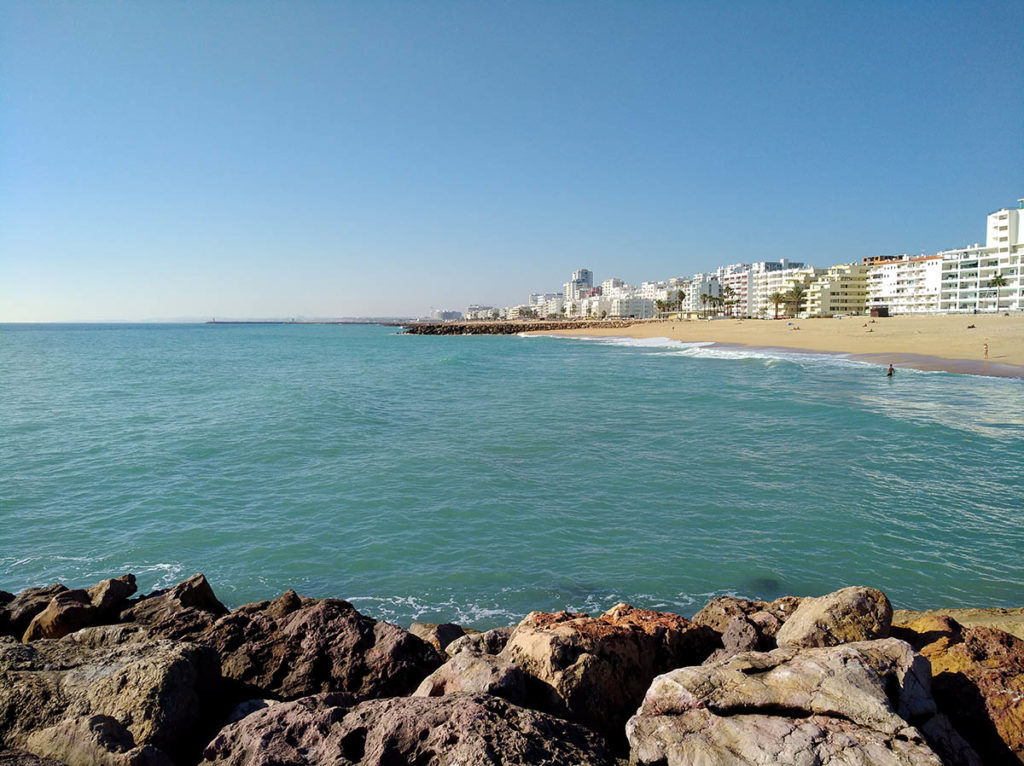The Algarve has had a serious love affair with its tourism model for decades. to concrete mixer, which has preferentially obliterated stretches of the coast.
A model in which the region, inspired by lice in southern Spain and other horror circuses, and animated by the explosive cocktail of promiscuity between political parties, banks and builders, blindly embarked on the repetition of territorial and urbanistic errors of massification and imposition of the fabric built to the landscape that others had committed, without respect for biophysical limits or human scale.
The result was visible, in mere clumps of buildings that, more than configuring cities, are sad, arid, ugly and, above all, unstructured, unhealthy and deserted for much of the year, in a region marked by some of the most tricky conurbation. And, as a bonus of the times, they are in the front line of exposure to the potential risks of the effects of climate change.
In that typically Portuguese trait, the delay in relation to others served not to learn, but rather to expand the nonsense.
Still, as popular wisdom says, better late than never.
Loulé City Council is already on the second partial suspension of its Municipal Master Plan (PDM) this year – in February, a similar measure had been taken to halt the consolidation of the building on the eastern edge of the city. – for the Quarteira area, based on assumptions of environmental and urban safeguards.
This time the goal is secure a free land at the rear of the first built-up line of Quarteira, which allows for the creation of a pocket of relief in the urban fabric, for potential conversion into green space (it is better if it is landscaped, because if green is just a color, a garden is an effective space, with identity and ambience), it guarantees greater wholesomeness, quality and amenity of the whole.
Both measures constitute effective territorial management, in the circumstance to stop processes that are seen as harmful to the urban and environmental balance of the coastal strip. They clearly represent political choices, and show unmistakable courage, as naturally risks and costs are involved – just as they are in the omission of management.
They also reveal a relative coherence between speech and action, since talking about climate change and adaptation is easy (as is drawing up an inter-municipal plan for this purpose), whereas it is difficult to actually do something. In this case, doing so involves avoiding the aggravation of the aforementioned exposure to its negative effects.
A coherence that is not total only because, better than isolated and reactive measures of territorial management, they are systemic measures, anchored in strategic, structured thinking, with long-term planning supported and shaped by management instruments suitable for this purpose. In this sense, only the effective revision of the PDM, with consideration and redefinition of the territorial model and the strategic axes of intervention in the landscape, allows such an integrated approach. And this one, inexplicably, takes a long time.
The absence of this structural integration weakens the options taken and to be taken, in case both are not uniform in the principles they defend.
In this chapter, these recent management measures face a brutal challenge, materialized in the project for the subdivision and urbanization works of Cidade Lacustre de Vilamoura, half walls with Quarteira.
At the moment, the project's Environmental Impact Assessment (EIA) process is under way - interestingly, the lakes were designed in 2017, having been the subject of an autonomous EIA process, much in the way beyond the tricky logic that the urban rabiosque has nothing to do with the lake trousers.
While it is true that many other guardianships and jurisdictions are involved in this process, what will be Loulé's stance here?
To help, do a memory exercise.
Let's go back to December 2017, when right next to the projected water city, beyond the imaginary line that separates the municipalities of Loulé and Albufeira, the project Sunset Albufeira Sport & Health Resort was failed in EIA headquarters.
At that time, and very well, lead was based on several factors, namely because it was a typology that would dramatically de-characterize and artificialize the local landscape (understood as "strategic for the region's image") and because it entailed significant losses of soil in the Quarteira floodplain, with the consequent loss of agricultural potential, the discontinuity of the meadow, as well as the reduction and permanent alteration of the ecosystems present.
What can we say about this aquatic megalomania, which proposes to excavate, completely modify and build the final section of the Ribeira de Quarteira, dramatically altering the hydrological cycle through the diversion of water lines, construction of a dam to prevent floods and sedimentation?
It will be the exchange of this landscape and habitats for the six “microenvironments” (I have a “guilty pleasure” regarding the names that these developments adopt, in the case of Vila, Ilha, Baía, Duna, Oásis and Belvedere…), with buildings in risk zone, the adaptation that is so often talked about in view of the predicted rise in mean sea level, intensification of extreme weather phenomena and coastal erosion?
It is therefore important to know whether the commendable line of territorial management from Loulé to the coast is also continued in the case of Vilamoura, and whether, by applying it, it manages to prevail against the other interests that move there.
Until then, we are all suspended, in anticipation...
Author Gonçalo Gomes is a landscape architect, president of the Algarve Regional Section of the Portuguese Association of Landscape Architects (APAP).
(and writes according to the old Spelling Agreement)



















Comments